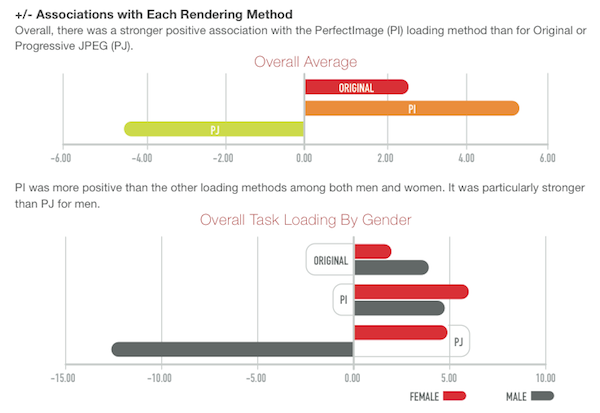Optimize Images for Happier Site Users [Research]
Innovative new study from Radware measures user emotions when viewing images online.
A new study from technology provider Radware has revealed the importance of optimizing images so that they render more quickly in a users’ browser, as a means of boosting the overall user experience of websites.
Recent case studies on this topic include Yahoo, which discovered that making pages 400 milliseconds faster resulted in a 9 percent traffic increase. Another study referenced in the report specified how online auto parts retailer AutoAnything experienced a 13 percent increase in sales, after managing to cut its page load times in half.
Advanced Neuroscientific Methods
Until now, technological limitations have prevented a large scale analysis of user sentiment as affected by the effectiveness of image loading speeds. However, Radware’s study utilized sophisticated neuroscientific techniques that allowed them to “effectively evaluate emotions objectively, sensitively, and with meaningful granularity.”
Their method incorporated “Facial Action Coding”, which measured moment-by-moment emotional responses, as well as “Implicit Response Testing” which extracted relative measures of frustration as read in people’s facial expressions.
Test participants were then evaluated on their response to three key image types:
- Original – Standardlosslessimage.
- Progressive JPEG – Image is downloaded in lower resolution, displayed in the browser, then “progressively” downloaded and re-displayed until the full resolution is shown.
- PerfectImage - Lossy image that is carefully degraded usinga DCIM (DigitalCameraImages) human vision algorithm. This technique results in a 5 percent loss in image quality with a much smaller file size. (Radware is developing this image format.)
Results Summary

- Among the three image rendering formats, PerfectImage was the clear overall leader in both the Facial Action Coding test and the Implicit Response test.
- In the Facial Coding test, PerfectImage was stronger amongst women than men.
- Overall emotion [happiness] reactions were stronger for women than men.
- As well as having the highest average emotion [happiness] measures, PerfectImage also tended to have the highest peaks of intense emotion [happiness] when looking at the data second-by-second.
- In the Implicit Response test, PerfectImage was the superior rendering format among men on visual tasks, but for women all formats were about equal for visual tasks.
- On the text tasks, PerfectImage was superior for women, while original and PerfectImage were about equal for men on text tasks.
- ProgressiveJPEG format was particularly negative for men.
Conclusion
The report highlights in no uncertain terms that image quality and loading speeds have a pronounced effect on user happiness as they are browsing sites. The study itself has been somewhat groundbreaking in its insights, in that Radware’s advanced measurement procedures that have provided marketers with data on immediate user responses to the images they are viewing online.
A clear and stark takeaway from the report must be the emphatic results and negative sentiment that surrounds progressive images – those that load gradually, and provide the user with something to look at before the full image can load. Fortunately, many brands seem to already be acutely aware of this, with now only 5 to 7 percent of web pages using progressive JPEGs.
As digital becomes even more visually driven, having the most effective image compression methods and delivery solutions are bound to be a particular consideration for ecommerce retailers, media publishers, but also for any consumer facing brands operating online.
